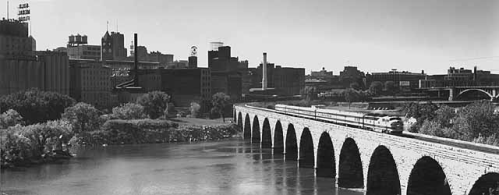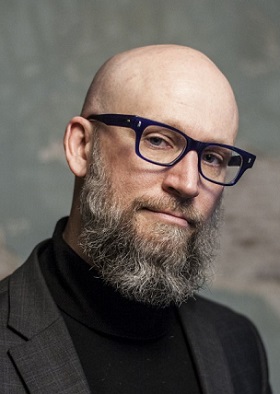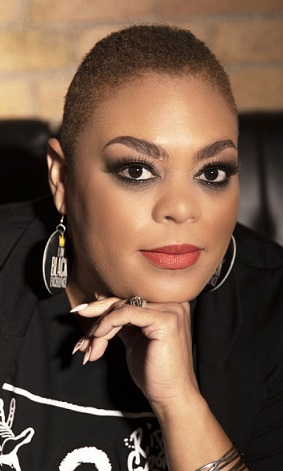
Minneapolis Sets New Voter Turnout Record
More than 237,000 ballots were cast in Minneapolis, breaking the city’s record for an election turnout. A record number of voters also cast early ballots, largely to prevent the spread of COVID-19.
While the final turnout number for the city may still change, an estimated, unofficial total of 237,689 ballots were cast in this election, including more than 170,000 absentee ballots. That means 80.6% of registered voters in Minneapolis participated in this election.
In comparison, a total of 219,832 ballots were cast in Minneapolis in the 2016 presidential election, which was the previous record. Of those, 60,538 ballots were cast early. Mail ballots postmarked on or by Nov. 3 and received through Nov. 10 will continue to increase the overall ballot totals. A court decision on Thursday gave the City direction to segregate mail ballots received after Nov. 3 but did not direct to the City to leave these ballots uncounted.
Partial, unofficial election results can be found on the Secretary of State’s website.
Take Survey on Transforming Community Safety
Minneapolis community, please provide your input on what community safety looks like and tell us your ideas about a new model of community safety for the City. You can take the survey in English right now, and translations will follow shortly on the City website. Complete the survey by Nov. 20 for the first phase of survey results. Input provided after Nov. 20 may continue to be used for future engagement phases.
In June 2020, the City Council pledged to create a new model of community safety. As part of that, we committed to a yearlong process of community engagement. This survey is one of the first steps in that process. Through the survey, you can share your vision for a new community safety model. You can also provide ideas for how to accomplish that new model.
Results from the survey will be used to help create recommendations for elected leaders and to help guide the City’s next steps for community engagement.
This survey includes some questions similar to other recent City surveys. That includes questions about alternative responses to mental health crises and non-emergency crimes. Any input you already provided on those surveys is valued and will still be used as planned. Recommendations will also be considered as part of this broader focus on transforming community safety.
Take the survey
Take the survey and share it with your community, and check back for Spanish, Somali, Hmong and Oromo versions soon.
You can also check back to stay up to date on progress and more opportunities to provide input.
2020 Collection of Leaves and Bundled Brush Ends Soon
Garbage day in the week of Nov. 16 is the last 2020 collection for leaves, brush and other yard trimmings. Minneapolis Solid Waste & Recycling customers can set properly prepared yard waste at their alleys or curbs next to their garbage carts by 6 a.m. on garbage day.
Yard waste must be in compostable bags – paper (Kraft) or compostable plastic – or unbagged in a reusable container 32-38 gallons in size, at least 26 inches high, with sturdy handles. Reusable containers are lifted and emptied by hand; they must be easily managed. Yard waste is not allowed in City-provided containers.
Preparing yard trimmings and leaves
Preparing brush
- Less than 40 pounds.
- Less than 3 feet long.
- Branch size less than 3 inches in diameter.
- Must be bundled with string or twine (no wire or tape).
Reusable containers
- Less than 40 pounds full.
- Between 32 and 38 gallons in size.
- At least 26 inches high.
- Must have sturdy handles.
Which bags can be used in the program?
- Compostable plastic bags labeled with the BPI logo.
- Paper (Kraft) bags.
Bags marked “biodegradable” or “degradable” do not meet the State law and are not accepted.
It’s against the law and bad for our lakes to rake leaves into the street.
Anyone who has questions about leaf and brush pickup can call 612-673-2917 between 8 a.m. and 4 p.m. People can also find more information on the Solid Waste & Recycling webpages.
Fall Street Sweeping Continues
City crews continue to sweep streets across Minneapolis before winter to keep leaves and debris out of the storm drains and ending up in our lakes and rivers as much as possible.
During the four weeks of the comprehensive fall street sweep, crews will clean about 1,000 miles of city streets. To make sure crews can do the best job possible, temporary “No Parking” signs will be posted at least 24 hours in advance so streets will be clear of cars when they’re swept. Anyone who parks on the street will need to follow posted parking rules or their cars may be ticketed and towed.
Use this link to check dates for street sweeping in your area: sweeping and leaf collection on streets.
Free COVID-19 Tests and Flu Shots in Ward 7
The City of Minneapolis is offering free COVID-19 tests and flu shots. Testing is encouraged and available to everyone, whether or not they have symptoms. Testing is one of the best ways to stop the spread of COVID-19 and help prevent exposing your loved ones to the virus.
You don’t need insurance for the test. Your flu shot is free if you don’t have insurance. If you do have insurance, bring your insurance card for the flu shot.
Free COVID-19 tests and flu shots at Hennepin United Methodist, 511 Groveland Ave. Noon-3 p.m. Saturday, Nov. 7
You can expect to get your test results in about two business days.
Find a current list of free COVID-19 tests and flu shots on the City website.
COVID-19 Situational Update as of November 6, 2020
Situational updates: Minneapolis
- There are 14,542 cases in Minneapolis and 264 deaths. The total number of cases increased by 10% over the previous week. Hospitalizations increased by 4.5% and ICU admissions increased by 3.8%.
- Over the past week, average daily case counts have increased from the mid-70s to more than 100 cases per day. We have surpassed 200 cases per day 3 times in the past week.
- We are seeing increases across age and racial/ethnic groups.
- Minneapolis-specific daily case counts and demographics are available at www.minneapolismn.gov/coronavirus/dashboard. Additionally, specific case counts by neighborhood are also available.
- Mayor Frey’s Emergency Regulation No. 12 regarding masks remains in effect. The regulation requires people to wear face masks in all indoor public places.
- Mayor Frey’s Emergency Regulation No. 17 regarding bars and restaurants remains in effect. The regulation closes bar areas in restaurants, nightclubs, and indoor spaces of entertainment. Food and beverages can be served tableside while patrons are seated and patrons can approach the bar to order as long as they don’t congregate.
Situational updates: Minnesota
- There are 160,923 cases in Minnesota out of over 2.9 million tests completed. There have been 2,530 deaths from COVID-19 in Minnesota. There are 38,911 cases and 1,009 deaths in Hennepin County.
- The Minnesota Department of Health uses a color-coded map to track a seven-day rolling average of new cases. As of October 26, the State is reporting 39.6 cases per 100,000 and Minneapolis is at 32.1 cases per 100,000. Both the City and State rates have increased significantly over the last week. These numbers put both Minnesota and Minneapolis in the red category. The red category is characterized as a tipping point which might indicate the need for more stringent safety measures.
- Minnesota is currently in Phase III of the Stay Safe MN plan for reopening.
- Governor Walz’s statewide mask mandate remains in effect. People are required to wear masks in all indoor public places where people gather and some outdoor venues where physical distancing is difficult.
Health Department Incident Command updates
Case investigation/Contact tracing
- The Health Department continues to conduct follow-up on individuals diagnosed with COVID-19, as well as, contact tracing at both workplaces and with exposed individuals. Currently there are 37 active case investigators, including four non-MHD enterprise staff and 12 AmeriCorps staff.
- Of the 14,542 cases in Minneapolis, 80.7% have been interviewed, 2.4% refused, and 10.2% have been lost to follow-up. Approximately 6.6% of new cases still need to be interviewed. With increasing number of cases, the percent still needing to be interviewed has also increased significantly. Twenty-five percent of interviews of Minneapolis residents have been conducted in a language other than English.
Community COVID-19 testing and flu shots
- Community testing partner Shiloh Temple sent the following note to Commissioner Musicant thanking the City’s for its commitment to the health of North Minneapolis. “Your team was a pleasure to work with. Also your commitment to the Health of the North Minneapolis Communities is unwavering. Because of you, people of color, and all those who call Minneapolis home, can thrive and be healthy in this great City.”
- A new ad campaign launched on November 1 to promote COVID-19 community testing. The campaign includes targeted social media and community newspaper ads, new dedicated testing webpages on the City’s website, donated billboard space, radio spots, and videos. Messages will be available in multiple languages.
- We are continuing to explore options for indoor testing events during the winter months. We have purchased saliva test kits that can be used at community events or for at-home testing.
- The State health department will offer free saliva testing at the Minneapolis Convention Center starting Monday, November 9. Testing will be available seven days a week, noon to 7 p.m. on weekdays and 10 a.m. to 4 p.m. on weekends. Appointments can be made through the Vault Health registration site.
Upcoming COVID-19 testing events
Flu shots will be available at both events. Participants can register at the events and test results are usually available in two business days.
- Hennepin Avenue United Methodist Church, 511 Groveland Ave., from 12-3 p.m. on Saturday, November 7.
- East Side Neighborhood Services, 1700 Second St. NE, from 12-3 p.m. on Saturday, November 14.
COVID-19 vaccination
- We continue to share COVID-19 vaccination information through presentations and listening sessions with community groups and neighborhood associations. A good source of reliable information about COVID-19 vaccination is the Minnesota Department of Health’s COVID-19 vaccine website.
- We are recruiting community partners to serve as COVID-19 Vaccine Community Liaisons. So far, we have seven liaisons onboard and are working to fill gaps in geographic or demographic representation. Over the next few weeks, they will conduct community outreach to share information about COVID-19 vaccination and bring back residents’ questions, concerns, and insights to help guide our planning efforts.
- We continue to meet regularly with the State and the Metro Region Healthcare Coalition to plan for vaccine distribution. Initial doses of the vaccine, expected in mid-to late-December, will be distributed to staff at hospitals and long-term care facilities. MHD is reaching out to key partners to coordinate distribution logistics for long-term care sites; the Metro Region Healthcare Coalition will ensure distribution to hospitals.
Food insecurity
- MHD is issuing $970,000 of CARES funding to 37 organizations to increase food security in response to COVID-19. Awards ranged from $2,000 to 53,500 and will pay for food, hygiene supplies and equipment used for food distribution this fall. Organizations will serve BIPOC communities and some are targeting special populations such as HIV/AIDS positive, older adults and persons experiencing homelessness. Funding has been allocated to parts of the city where food insecurity is the greatest.
- CARES funding will also be used to provide supports at Corcoran Park to the families that had been previously served at Powderhorn Park. This effort is a collaboration of MHD, NCR, MPRB and food security partners.
School Based Clinics
- The seven school based clinics (SBC) located in six Minneapolis Public high schools and one alternative school have transitioned to a hybrid model of seeing teens via telehealth and limited in person visits at the clinics. SBC staff have worked hard to ensure that clients have access to health services including mental health and prescriptions often times dropping medications off at students’ homes.
- Although visits and the resulting revenue from insurance is down, the clinics have secured some grant funding to strengthen the capacity for tele-mental health services and health education. While SBCs are successfully adapting, they are concerned about lower immunization rates and the potential for an increased number of sexually transmitted infections due to less STI testing during the pandemic.
Businesses
- Stories from the field: o A couple who own a downtown restaurant reached out to their health inspector asking about City support for their business. The business estimates their sales are at 10% of pre-COVID-19 levels. They are being allowed to pay only 25% of their rent, but the landlord expects the other 75% to be paid in the future. All staff has been laid off except for one part time employee. The Small Business Team is working with them.
- A business owner had an employee test positive. Employees got COVID-19 tests in a variety of places. The owner closed the business while waiting for COVID-19 test results to arrive. The owner was frustrated to find there was not a way to quickly test all staff and possibly prevent the business from closing.
- Environmental Health inspectors performed a bar sweep of six businesses on Friday, Oct 20, as part of a response to increased COVID-19 cases. Overall, the businesses are implementing their COVID-19 preparedness plan accordingly. During the sweep, an inspector noticed a party bus with about 40 patrons on board dancing with no room to move. A complaint was submitted to the party bus company for follow-up.
- Health inspectors completed 94 food safety routine inspections with an emphasis on COVID-19 preparedness plans and the implementation of COVID-19 protocols. Health inspectors responded to 9 food safety/sanitation/COVID-19 311 complaints. Health inspectors responded to 5 incidents of reported COVID-19 positive employees/patrons. One event was inspected over the weekend.
Homeless encampments
- The environmental assessment of the encampment at Van White Memorial Blvd and 2nd Ave N. was completed. The assessment determined the site is not safe to be camped there. City staff visited the site last Friday to inform the residents. Some chose to leave. Due to the lawsuit, we are not demobilizing the site at this time.
- The City is working to remove a significant amount of trash from a small encampment at 27th and 3rd.
- MRBP has only a few remaining encampments.
Logistics
- MHD staff continues to respond to community requests for surgical masks, cloth masks and hand sanitizer. This past week, supplies were distributed to members of the Shared Powers Advisory Committee and senior living facilities.
- MHD’s COVID-19 email address responds to daily inquiries for guidance on COVID testing, quarantine and contact tracing, complaints about mask wearing in businesses, workplaces and public spaces and solicitations for PPE or donated supplies.
- Federal CARES funds have been used to purchase safety and hygiene supplies, equipment and testing materials to support MHD testing events through November 14.
Find COVID-19 tips for staying well and travel guidelines on the Health Department web page.
The City specific COVID email address is: COVID19@minneapolismn.gov.
 Friday, November 20, 2020 at 6:05AM |
Friday, November 20, 2020 at 6:05AM |  David Tinjum |
David Tinjum | 






 Thanksgiving pecan and pumpkin pies
Thanksgiving pecan and pumpkin pies
























